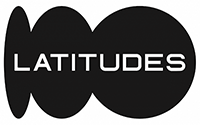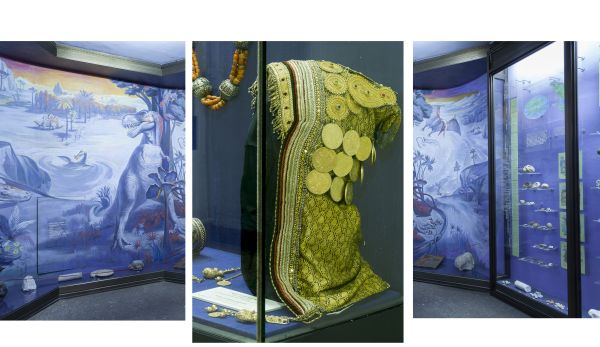Welcome stranger, Revisiting Museutopia
Store Review (0)PRESENTED BY : Nel
| Frame | None |
|---|---|
| Medium | Digital Print on Canvas |
| Location | Cape Town, South Africa |
| Height | 181.00 cm |
| Width | 373.00 cm |
| Artist | Ilya Rabinovich |
| Year | 2024 |

payments Learn more


Shop Online
and fill your cart
Choose Payflex at checkout
Get approved and
pay today
with your debit
or credit card
Pay the remainder
over 6-weeks.
No interest.
No fees.
This triptych is composed of two parts. On the sides is a photo I took at The National Museum of Ethnography and Natural History in Chisinau in 2009, and in the middle is a photograph I took at the Museum for Islamic Art in Jerusalem in 2017.
The Museum for Islamic Art is based on a private collection of a Jewish scholar and depicts Islamic art from the entire Middle East region through the ages. What is most astounding is that there is no section dedicated to art or artisan creations from the pre-Israel/Palestine region. This absence may have occurred for many logical reasons, but it leads to a grim realization about the politics of the “absent Palestinian other,” especially in light of the fact that Jewish Arab artisans’ creations are included—for example, the ceremonial bridal clothing made in Yemen in the 19th century (the center photograph).
The National Museum of Ethnography and Natural History is historically the oldest and most significant scientific museum in Moldova, opened in 1904. Over the years, it went through many phases, and after the fall of the Soviet Union and the establishment of the independent Republic of Moldova, a new vision of Moldovan history had to be presented to the public. It took about four years to develop the permanent exhibition, which was created following a UNESCO manual. The museum presents the creation of the universe from the Moldovan perspective, both scientifically and theologically.
This exhibition hall features a display devoted to the so-called Mesozoic Era, showcasing paleontological maps, fossils, rocks, and animal bones that illustrate the evolution and diversity of the organic world during the Mesozoic Era (250 million–65 million years ago) in the Moldovan region. The murals allow visitors to get a sense of the proportions of the prehistoric animals, most of which were wiped out by repeated climate changes.
However, beyond a doubt, the most prominent part of the exhibition is the wall painting, which is based purely on fantasy. This element puts the scientific artifacts into question—because if fantasy is visually more important than hard scientific evidence, then what is the need for science at all?













